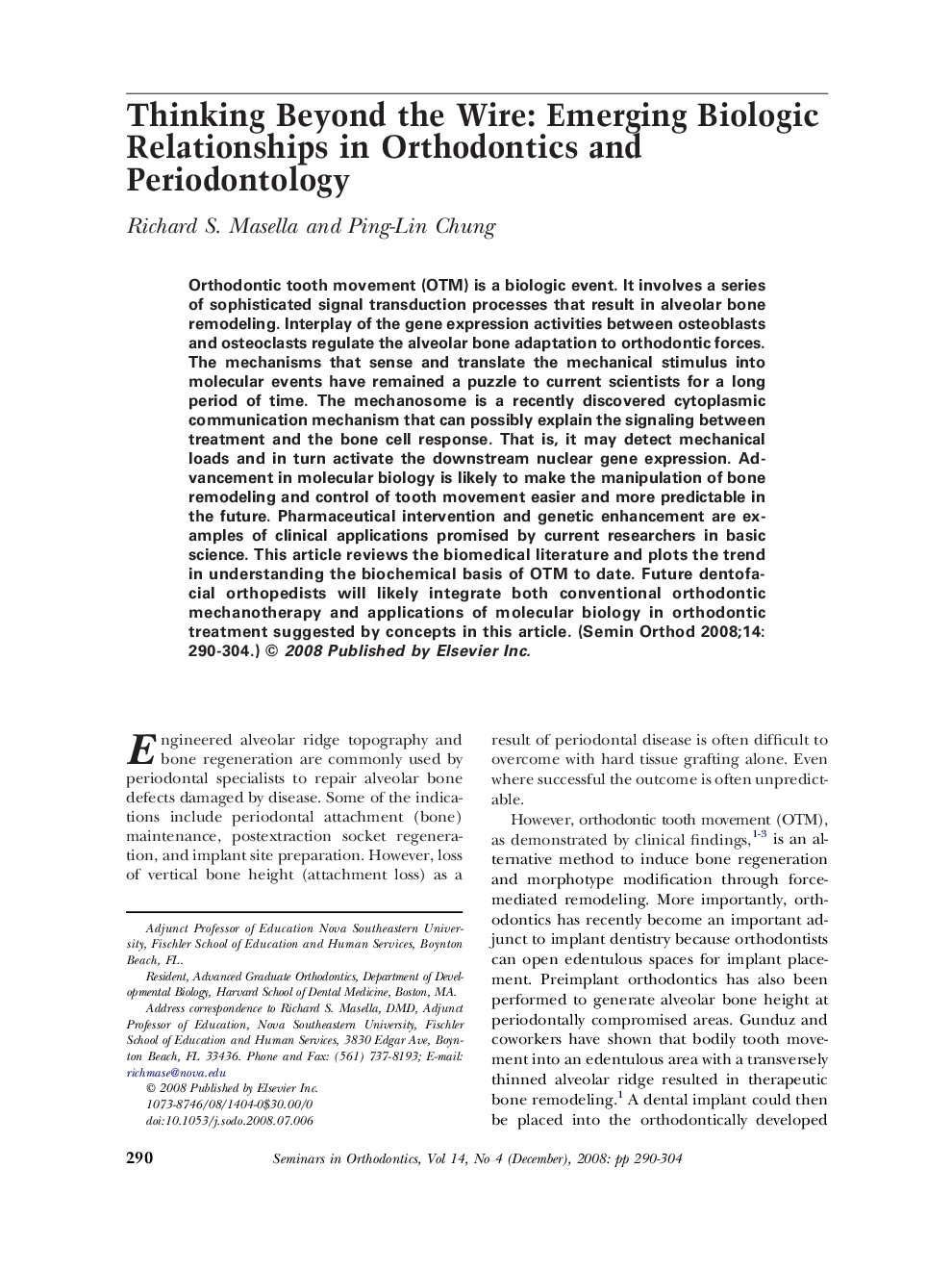| Article ID | Journal | Published Year | Pages | File Type |
|---|---|---|---|---|
| 3175503 | Seminars in Orthodontics | 2008 | 15 Pages |
Orthodontic tooth movement (OTM) is a biologic event. It involves a series of sophisticated signal transduction processes that result in alveolar bone remodeling. Interplay of the gene expression activities between osteoblasts and osteoclasts regulate the alveolar bone adaptation to orthodontic forces. The mechanisms that sense and translate the mechanical stimulus into molecular events have remained a puzzle to current scientists for a long period of time. The mechanosome is a recently discovered cytoplasmic communication mechanism that can possibly explain the signaling between treatment and the bone cell response. That is, it may detect mechanical loads and in turn activate the downstream nuclear gene expression. Advancement in molecular biology is likely to make the manipulation of bone remodeling and control of tooth movement easier and more predictable in the future. Pharmaceutical intervention and genetic enhancement are examples of clinical applications promised by current researchers in basic science. This article reviews the biomedical literature and plots the trend in understanding the biochemical basis of OTM to date. Future dentofacial orthopedists will likely integrate both conventional orthodontic mechanotherapy and applications of molecular biology in orthodontic treatment suggested by concepts in this article.
